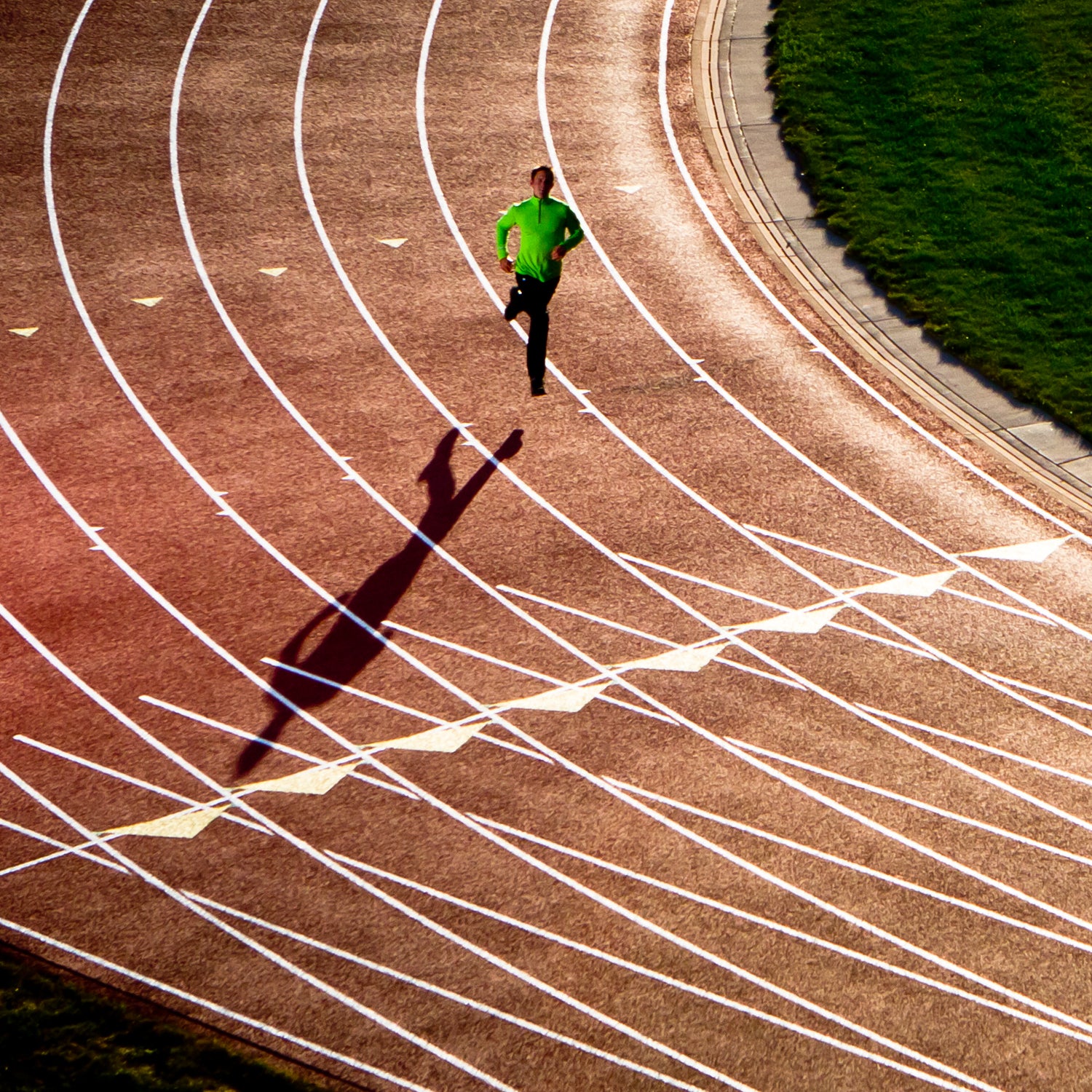Caffeine can be a wonderful thing, especially in the world of fitness. It can boost mental acuity, performance, and , and trans-dermal caffeine patches have even been touted as weight-loss aids and general energy sources. But for the first time, they’re being marketed specifically to athletes in the form of a new product called the .
The idea is intriguing. A feel-good boost without the calories (or potential GI issues) of food-based sources? Sign us up. But first, we wanted to check with the professionalsÔÇöathletes and scientistsÔÇöabout how well (and how safely) these things actually work.
First, a quick overview: The Clean Energy Patch is a small piece of KT tape treated with caffeine and “other natural ingredients”ÔÇönamely guarana and cocoa, both plant-based sources of caffeine. Users are instructed to stick the patch to hairless areas of the body, such as the chest, forearm, or hip, and to leave it on for up to eight hours.
ÔÇťThe really nice thing about using a patch is that the substance is time-releasedÔÇöit’s not thrust into your system all at once.ÔÇŁ
Each patch contains 35 milligrams of caffeine, compared with about 100 milligrams in a cup of coffee. (Caffeine content varies by brand; competitor , for example, have 65 mg each.) “Clean Energy Patch is not a substitute for coffee,” states the website’s FAQ section, “but many find that it gives a nice ÔÇśHUM,ÔÇÖ an uplift in mood and focus.”
From a medical standpoint, there’s nothing wrong with getting caffeine from a patch, says exercise physiologist and nutrition researcher , who points out that plenty of drugs are delivered safely and effectively through the skin. And there can be advantages to this method.
“Caffeine is water-soluble, so we know it can enter the body trans-dermally and skip some of the absorption delay that would occur if you take it by fluid or food,” says Arciero. “And the really nice thing about using a patch is that the substance is time-releasedÔÇöit’s not thrust into your system all at once.”
Bypassing the stomach and its digestive enzymes will make the overall effects of caffeine stronger, he points out, even if they’re spread out over several hours. So it’s good the Clean Energy Patch only contains about one-third the caffeine as a cup of coffee. (The product’s safety info advises users not to use more than two patches at a time.)
And if coffee tends to give you gastrointestinal distress, a patch should theoretically alleviate those issues, says Arciero. He agrees that it may be a good choice for people who get upset stomachs when they pair caffeine and exercise, or who tend to get “butterflies” before competitions.
What a patch delivery probably won’t help with, however, is other side effects that some people experience from caffeine ingestionÔÇölike jitteriness, insomnia, or an irregular heart beat. “Some people just don’t tolerate caffeine well, especially when they’re working out and are already putting stress on their cardiovascular system,” Arciero says. “For those people, this patch isn’t necessarily going to solve those problems.”
He also says the patch should never be used by athletes younger than 18, and that adults using the patch should scale back on or eliminate other daily sources of caffeine, like coffee and energy drinks.
In general, Arciero recommends that athletesÔÇöanyone, reallyÔÇöuse caffeine strategically and sparingly. Because the drug can stay in the body for up to 12 hours, he suggests using caffeine (whether it’s via coffee or a patch) at the same time every dayÔÇöpreferably in the morning, when it’s not likely to interfere with your sleep later.
“When you have that second dose later in the afternoon, that’s when you start to build up a tolerance and it can begin to lose its beneficial effects,” he says. Taking a break from caffeine a week before a big race or athletic event may also help you utilize the drug’s full powers during competition.
Bottom line: “A patch can be safe and beneficial for athletes who tolerate caffeine well,” says Arciero. “But it’s not for people who are consuming additional sources of caffeine in their normal diet, and not something I’d recommend be used chronically.” Always follow dosage and safety instructions, but know that a low-dose patch is no riskierÔÇöand will perhaps work even betterÔÇöthan a pre-workout Red Bull or cup of joe.


